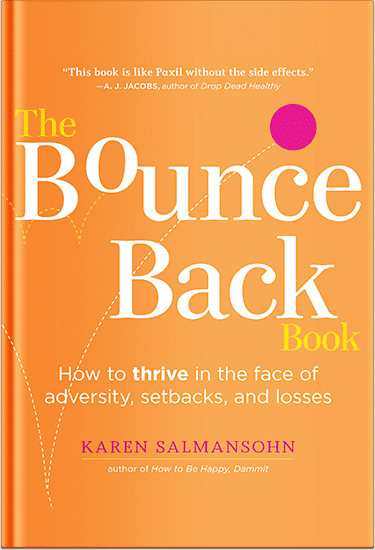 In today’s ever-changing work environment, investing in employee training is crucial to stay competitive. It boosts productivity and enhances job satisfaction and retention. Therefore, it isn’t surprising that so many organizations are using employee training platforms to keep track of their worker’s performance and training.
In today’s ever-changing work environment, investing in employee training is crucial to stay competitive. It boosts productivity and enhances job satisfaction and retention. Therefore, it isn’t surprising that so many organizations are using employee training platforms to keep track of their worker’s performance and training.
By putting together a list of things that you want to train your team on, you can get further with your business goals. The emerging technologies list, understanding more about data and bringing your entire team into it can help your business to progress. Understanding why your employees need training is a good place to begin.
If you are looking for employee training tracking software, you must understand the different methods of employee training.
I’m writing about this topic because I’m a leading Behavioral Change Expert and executive coach for entrepreneurs and business people I help individuals and companies to manage challenging situations – and grow their success.
8 Different Methods of Employee Training
So, here is a guide exploring methods of employee training that businesses can utilize to equip their workforce with the knowledge and skills for success.
1. Instructor-Guided Training
Instructor-guided or classroom training is a tried and true approach used across industries. In this method, an expert trainer facilitates discussions and activities to impart knowledge and encourage skill development. Participants have the opportunity to ask questions, collaborate on group projects, and share ideas. The direct interaction between trainers and trainees allows for clarification of doubts, fostering engagement. There definitely many benefits from pursuing career development employee engagement – both emotionally and financially for your people.
2. On-The-Job Training (OJT)
On-the-job training immerses employees in real-life work scenarios to gain experience. This method enables newcomers to shadow professionals while gradually taking on complex tasks themselves. OJT enhances skills and promotes contextual learning by exposing employees to common challenges they may face regularly.
3. E-Learning
As technology continues to advance in the workplace, e-learning is not only an education trend but also a cost-effective way to train employees remotely. With online modules, webinars, videos, and interactive exercises available anytime and anywhere, employees have the freedom to learn at their own pace. E-learning platforms also provide tools for tracking progress, allowing businesses to monitor employee performance.
4. Virtual Simulations
Learning through virtual simulations create environments or scenarios replicating real-life work situations for practice. They provide employees with an opportunity to enhance their decision-making skills without facing any consequences. These immersive experiences can be customized for job roles within an organization and serve as a safe space for employees to learn from mistakes while developing critical thinking abilities.
5. Microlearning Modules
Learning through microlearning involves breaking down concepts into bite modules that are easy to consume quickly. These concise lessons are often presented as videos or infographics and focus on topics or skills. Their brevity makes them perfect for employees and allows knowledge retention through repeated exposure and reinforcement.
6. Mentoring and Coaching
Mentoring and coaching programs involve pairing employees with seasoned professionals who act as guides, providing continuous support and feedback. In contrast to training techniques, mentoring relationships are established on the foundation of trust, empathy, and personalized guidance. This approach not only aids in developing skills but also fosters a sense of belonging and social integration within the organization. There is an important difference between coaching and mentoring, so it’s important to implement the program that best meets the needs of an organization.
7. Gamification
Learning through gamification incorporates game elements into the learning process to enhance employee engagement and motivation. By incorporating challenges, rewards, leaderboards, and friendly competition, this method transforms training into an experience that encourages participation. Gamification appeals to employees’ innate desire for achievement while allowing them to learn in an engaging manner.
8. Blended Learning
Blended learning combines different training methods to create a comprehensive and dynamic learning experience. This hybrid approach integrates instructor-led training sessions, e-learning modules, simulations, on-the-job coaching, and other tailored methods that cater to the organization’s and its employees’ needs.
By merging digital approaches, blended learning offers the flexibility of self-paced modules while still facilitating interactive discussions and practical application in a classroom environment. This method acknowledges that each individual possesses learning preferences and aims to provide a personalized and effective training experience.
Conclusion: Best Methods of Employee Training
Organizations need to invest in employee training to stay ahead of competitors. By embracing a range of training methods like instructor-led sessions, on-the-job experiences, e-learning platforms, simulations, microlearning modules, mentoring/coaching relationships, gamification techniques, and blended learning approaches – businesses can equip their workforce with the skills needed for success in an evolving landscape.
Organizations must evaluate each employee’s training requirements and choose methods based on budget limitations, capabilities, desired outcomes, and available resources. Implementing training approaches enhances employee performance and fosters a culture of growth within the organization.
By utilizing these methods along with ongoing assessment and feedback mechanisms – businesses can develop a skilled workforce ready for success in today’s competitive marketplace. Prioritizing training for employee development establishes a foundation for individual growth as well as organizational prosperity.
If you want more support, don’t hesitate to reach out. Set up a free Zoom exploratory call here.
P.S. Before you zip off to your next Internet pit stop, check out these 2 game changers below - that could dramatically upscale your life.
1. Check Out My Book On Enjoying A Well-Lived Life: It’s called "Your To Die For Life: How to Maximize Joy and Minimize Regret Before Your Time Runs Out." Think of it as your life’s manual to cranking up the volume on joy, meaning, and connection. Learn more here.
2. Life Review Therapy - What if you could get a clear picture of where you are versus where you want to be, and find out exactly why you’re not there yet? That’s what Life Review Therapy is all about.. If you’re serious about transforming your life, let’s talk. Learn more HERE.
Think happier. Think calmer.
Think about subscribing for free weekly tools here.
No SPAM, ever! Read the Privacy Policy for more information.
One last step!
Please go to your inbox and click the confirmation link we just emailed you so you can start to get your free weekly NotSalmon Happiness Tools! Plus, you’ll immediately receive a chunklette of Karen’s bestselling Bounce Back Book!


 In today’s ever-changing work environment, investing in employee training is crucial to stay competitive. It
In today’s ever-changing work environment, investing in employee training is crucial to stay competitive. It 